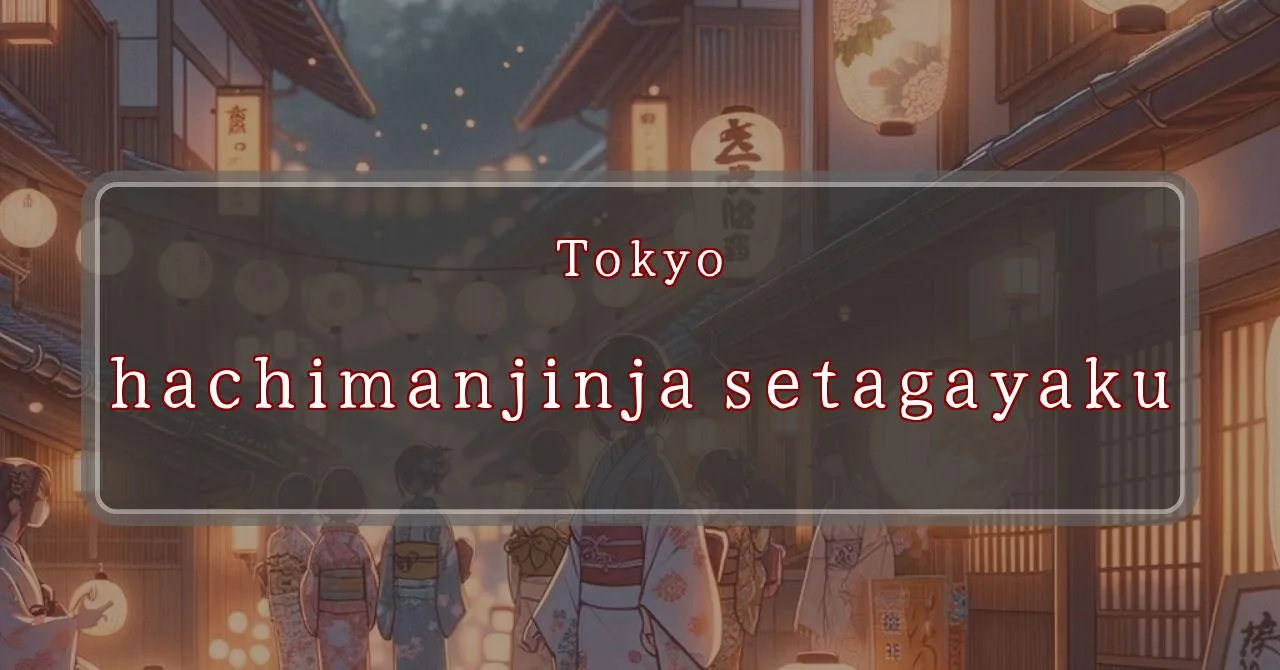Enchanting shrine festival in Tokyo, a fusion of tradition and vibrancy
Basic Information
Hachiman Shrine is a Shinto shrine located in Setagaya Ward, Tokyo, Japan. It is dedicated to the deity Hachiman, the god of war and archery.
- Address: 3-25-3 Daizawa, Setagaya-ku, Tokyo 155-0033
- Phone Number: 03-3422-1370
- Access: 10-minute walk from Shimo-Kitazawa Station on the Odakyu Line
- Festival Days: September 7th (Sat) and 8th (Sun), 2024
Main Events and Attractions of the Festival
The Hachiman Shrine Setagaya Ward Festival is a two-day festival held annually in early September. The festival features a variety of events and attractions, including:
Mikoshi Procession
The highlight of the festival is the mikoshi procession, which takes place on the second day of the festival. Twenty-three portable shrines, or mikoshi, are carried through the streets of Setagaya Ward by teams of people. The procession is accompanied by music and dancing, and it creates a lively and festive atmosphere.
Bon Odori Dance
Another popular event at the festival is the Bon Odori dance. This traditional Japanese dance is performed by people of all ages, and it is a great way to experience Japanese culture. The Bon Odori dance is typically performed in a circle, and it is accompanied by music and singing.
Food Stalls
The festival also features a variety of food stalls, where visitors can enjoy a variety of Japanese dishes, such as yakitori, takoyaki, and okonomiyaki. There are also a number of stalls selling souvenirs and crafts.
Stage Performances
In addition to the mikoshi procession, Bon Odori dance, and food stalls, the festival also features a variety of stage performances, such as traditional Japanese music and dance, as well as modern pop music.
- Mikoshi Procession: The highlight of the festival, featuring 23 portable shrines carried through the streets.
- Bon Odori Dance: A traditional Japanese dance performed by people of all ages.
- Food Stalls: Offering a variety of Japanese dishes, souvenirs, and crafts.
- Stage Performances: Showcasing traditional and modern Japanese music and dance.
Blessings and Deities
Hachiman Shrine is dedicated to Hachiman, the god of war and archery. Hachiman is one of the most important deities in the Shinto pantheon, and he is revered by people all over Japan. Hachiman is said to bring blessings of victory, success, and protection.
- Deity: Hachiman, the god of war and archery
- Blessings: Victory, success, and protection
Origin and History
The origins of Hachiman Shrine are unclear, but it is believed to have been founded in the 13th century. The shrine was originally located in a different part of Setagaya Ward, but it was moved to its current location in 1660. Hachiman Shrine has been a popular place of worship for centuries, and it is visited by people from all over Japan.
- Founded: 13th century
- Moved to current location: 1660
- Popularity: Visited by people from all over Japan
Tips and Notes for Visitors
If you are planning to visit Hachiman Shrine during the festival, here are a few tips and notes:
- Wear comfortable shoes: You will be doing a lot of walking, so make sure to wear comfortable shoes.
- Bring a camera: The festival is a great opportunity to take photos of the mikoshi procession, Bon Odori dance, and other attractions.
- Arrive early: The festival gets very crowded, so it is best to arrive early to get a good spot to watch the procession and other events.
- Be respectful: The festival is a religious event, so be respectful of the shrine and the people who are there to worship.
Parking Information
There is no parking lot at Hachiman Shrine, but there are several public parking lots nearby. The closest parking lot is located about a 5-minute walk from the shrine.
- Parking lot: None at the shrine, but several public parking lots nearby
- Closest parking lot: 5-minute walk from the shrine
Popular Stalls and Food Carts in Recent Years
| Type of Stall | Description |
|---|---|
| Takoyaki | A staple at Japanese festivals. Characterized by a crispy outside and a creamy inside. |
| Jaga Butter | A simple yet popular snack of hot potatoes lavishly topped with melted butter. |
| Baby Castella | Small castella cakes, sweet and fluffy treats enjoyed by children and adults alike. |
| Grilled Ayu with Salt | Fresh ayu fish grilled whole with salt, a savory taste of Japanese summer. |
| Shaapin | A unique gourmet item influenced by foreign cuisine, with a chewy skin wrapping the filling. |
| Okonomiyaki | A Japanese grilled dish where you often choose your own ingredients for a personalized flavor. |
| Cotton Candy | A fluffy, sweet snack that’s extremely popular with children. |
| Chocolate Banana | A banana coated in chocolate, a fun and visually appealing dessert. |
| Kushiyaki | Various types of ingredients skewered and grilled, an easy-to-enjoy snack. |
| Yakisoba | Fried noodles mixed with a special sauce, a fast food favorite in Japan. |



